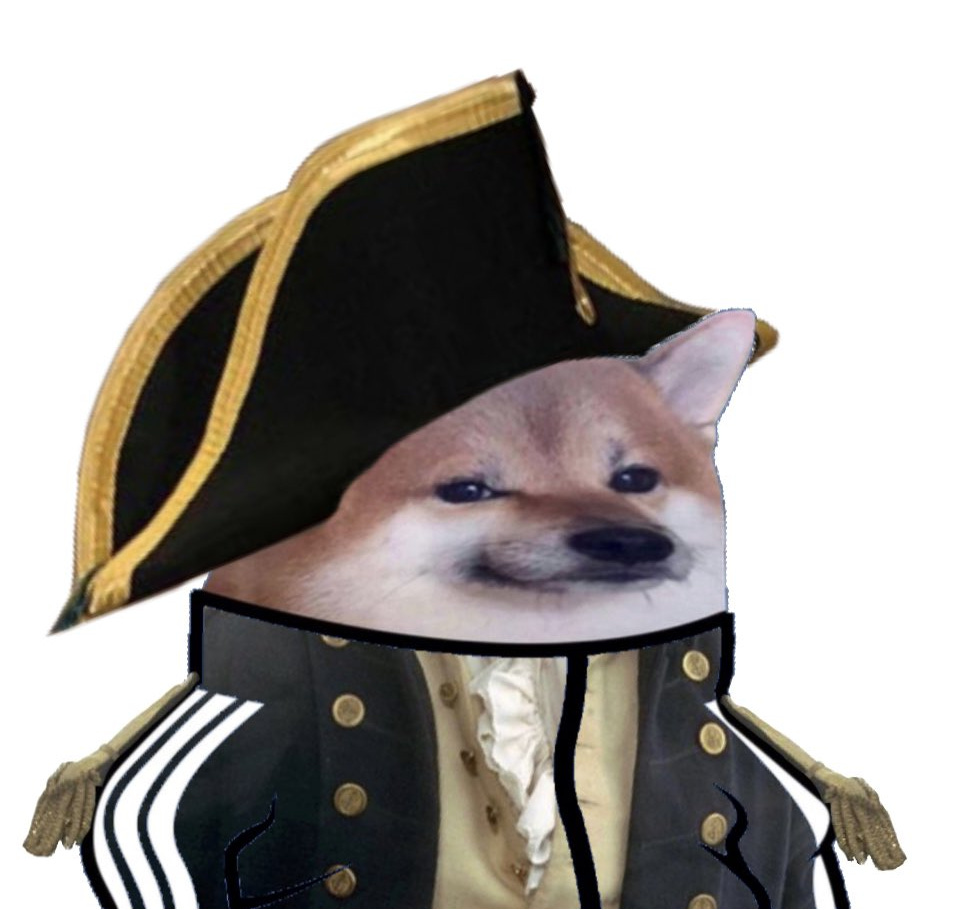I don’t normally go in for changing the social media furniture. Pronouns in bios, black squares on Instagram, political hashtags in display names. This stuff generally leaves me cold. It’s in-group signalling of the most tedious and self-regarding kind — whale-song, designed to bring people in to agree with and love you, from as many miles away as it takes.
So why, James, you might ask, is your avatar on Twitter now a picture of a grinning dog dressed like a nineteenth century naval officer?
And, you might also say, if you would be so bold, how could I get one myself?
But first things first. Many people, generally anonymous, have spent the last decade or so discussing revolutions and wars on social media. Ten years ago, it all felt quite momentous. With Gaddafi killed and the war in Syria ongoing, we were in the-old-world-is-dead-and-the-new-one-struggles-to-be-born territory.
Many Iraqis, Syrians and Libyans were on Twitter at that stage, and with their good English they could happily talk to Americans, Britons, Dutch, and what have you. We shared open-source information on the progress of their revolutions, their hopes for the future, and more. When their wars became bloodier and more vicious, we commiserated, and mourned those friends we lost, with gallows humour.
Time moved on: people vanished from the internet. A few conclusions became stronger and more entrenched: one of them was that, from Libya to Mali, to Syria and Ukraine, the Russians were bad news.
And then this year, the Russians invaded Ukraine. And they began to lose — not just badly, but humiliatingly. It was with laughing surprise that many of these accounts began to remerge. @Mr_Ghostly, a charming, witty commentator of the Syrian conflict who had gone dark years before, reappeared with a new name under the auspices of a ‘special Twitter operation’.
American ex-marines Matthew (@iamthewarax) and @MENAconflict were essentially incredulous that the ‘second army in the world’ could fail to execute a river crossing, or could place double-figures worth of generals in the path of drones and artillery. Unlike ‘woke western militaries’, Matthew said, the Russians were manly and patriotic enough to be blown skyward in ammo explosions from within their tanks.
And then, one day in May, @kama_kamilia was playing around with images. He edited a shiba inu dog — a Japanese breed long associated with internet culture — into a tracksuit, and then into military fatigues. What a goofy looking fella, he remarked — and others chimed in to agree.
Very soon, a people were asking for new fellas matching their specifications. Could you perhaps make one in Polish military kit, or with British infantry gear, portrait of Her Majesty in hand? It turned out that he could. And we were off to the races. I hopped aboard when Kama produced a fella resembling Russell Crowe in the film Master and Commander, and very soon it seemed like an NFT project designed not for evil but for good.
All of these people had seen revolutions and peaceful demonstrations crushed by Russians. So what began as image-manipulation turned into something else. The demand for ‘fellas’ began to outstrip supply, and so it was someone’s idea to start charging: a provable donation to the Georgian Legion — a foreign special forces section within the Ukrainian effort — and you could walk away with your very own customised fella.
At first people bought ballistic plates, which the Georgians desperately needed. As the movement has grown exponentially, these goals have grown larger. The ‘fellas’ have organised into a decentralised body called NAFO — which stands for what you think it might.
People now are crowdfunding for drones and sponsoring artillery pieces. And tweeting enough brain-damaged jokes at Russian officials to make social media seem a less fun and effective tool for the Kremlin’s men.
These things tend to snowball, so hundreds of thousands of dollars have now been raised. Now we have the Ukrainian defence ministry, and its minister, joining the cavalcade.
Naturally, this has led to immense commentary from a media which was late to the party. Who are all the cartoon dogs? What do they want? Might they be CIA? And could all this, perhaps, be in bad taste?
It’s not in unnecessarily bad taste — because wars are unpleasant things. Having a little laugh at the Russian Foreign Ministry is not exactly the same as massacring civilians. And people wrote messages on shells with a smile eighty years ago.
And the dogs can’t be CIA because the CIA does not exist.
Hundreds if not thousands of the Russians now dead or captured in Ukraine first machine-gunned Syrian breadlines, bombed Libyan market-places and did so for years against people without the technology to hit them back. Now they’re facing a near-peer, and they are falling to pieces in the process.
War is hell, but it can also be quite blackly, ironically amusing — if you’ve been watching it for long enough.


